ВУЗ: Не указан
Категория: Не указан
Дисциплина: Не указана
Добавлен: 17.07.2020
Просмотров: 582
Скачиваний: 1

As I’ve said there are 3 bedrooms and a study upstairs. The biggest one is my parent’s bedroom.
My elder sister occupies the other one. My bedroom is not very light as there is only one window in it. I have a bed and a bedside-table with a lamp on it.
In the left-hand corner of the room I have a built-in wardrobe with coat hangers to hang clothes on. I also have a writing table with a computer on it and an armchair before it.
In the right-hand corner there is a bookcase full of books, magazines and newspapers. I like the proverb says: “My home is my castle” because my house is, indeed, my little castle.
Vocabulary
a downtown -центр города
picturesque - живописный
cozy -уютный
a terrace - терраса
a basement - подвал
a game room - игровая комната
a gym - спортивный зал
a couch - диван
a square table -квадратный стол
a sideboard - сервант
a wardrobe - шкаф
a laundry room - прачечная
to occupy-занимать (комнату, помещение)
a bedside-table - тумбочка
a built-in wardrobe - встроенный шкаф
a coat hanger - вешалка
Answer the questions
-
Where does Adam live?
-
What can you say about his family?
-
Does Adam live in the apartment or in the house?
-
Is Adam’s house big or small?
-
How many rooms are there in his house?
-
How is the living room furnished?
-
What does his dad like to do in the living room?
-
Is there a piano in Adam’s house?
-
What is the warmest place in the house?
-
Who occupies the 3 bedrooms?
-
What furniture does Adam have in his room?
-
How does Adam call his house?
TEXT 2
Kelly’s house
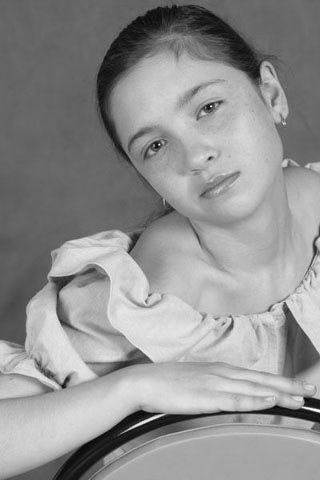
Hi, my name is Kelly, I live in London. I want to tell you about my apartment.
I live with my family in a two leveled apartment house on the second floor.
Our apartment has all modern conveniences: central heating, gas, electricity, running cold and hot water, telephone, an elevator, and a chute.
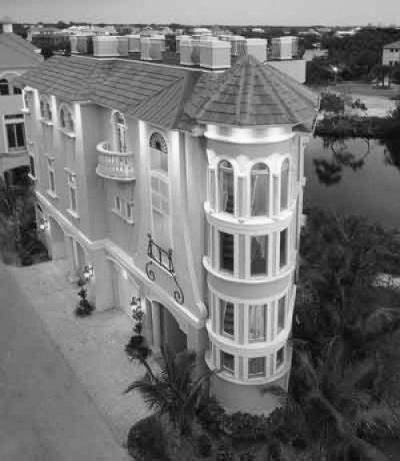
Our apartment consists of a great-room, a kitchen, a dinette zone, two bedrooms, master suite, a study and two balconies.
The living room is the largest and the most comfortable room in our apartment. It has a big balcony.

There are blue sofas with two blue armchairs, and a low table with a TV-set. There is a thick blue carpet on the floor, and there are light blue wallpapers on its walls. We call it a blue room.
My bedroom is smaller and not so light. There is a bed, a wardrobe, a dressing-table, a desk and an armchair in it. In the right-hand corner there is a bookcase full of books, magazines and girl stuff. I like to invite my friend to my room.
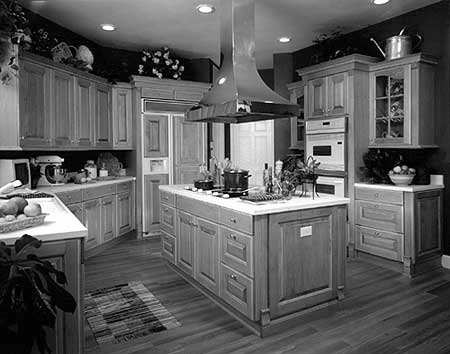
Our kitchen is handily arranged: there is a gas-stove, a fridge, a deep sink, built-up cupboards and a table that folds against the wall when not in use. I like to sit there with my mother late at night and drink hot chocolate. I like my apartment very much and I will miss my home when I go to college.
Vocabulary
convenience - удобствo
central heating - центральное отопление
running water - водопровод
an elevator - лифт
a chute - мусоропровод
to consist of - состоять из
wallpapers - обои
a dressing-table - туалетный столик
Answer the questions
-
Where does Kelly live?
-
What can you say about her family?
-
Does Kelly live in the apartment or in the house?
-
Is her apartment big or small?
-
How many rooms are there in her apartment?
-
How is the living room furnished?
-
Who designed her apartment?
-
Is there a balcony in Kelly’s apartment?
-
What room do they call a blue one?
-
How is Kelly’s room furnished?
-
What do Kelly and her friends do when they are together?
-
How is the kitchen arranged?
TEXT III
Misha’s house
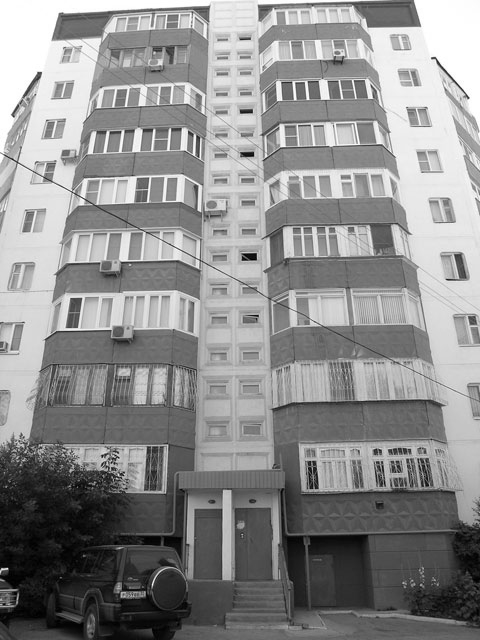
Hello, my name is Misha; I live in Astrakhan, Russia. I live in a new 9-storied apartment house. There is a big supermarket on the ground floor and it’s very convenient to do everyday shopping. Our apartment is on the fifth floor.
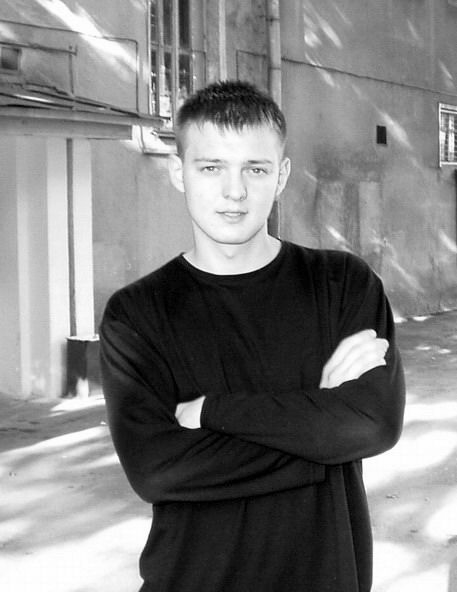
It’s very comfortable and well planned. There are three rooms, a kitchen, a bathroom and a hall in our apartment.
There is also a balcony and we enjoy a lovely view of the river. We use our living room as a dining room and as a sitting room, because it’s very large. In the middle of the room there is a big table and six tables around it. Opposite the window there is a wall unit with lots of books, a TV-set and a DVD player.
There are two comfortable armchairs and a small coffee table in the right-hand corner. There is also a sofa and an electric fire in our living room.
We like living room best of all because in the evenings we gather there to have tea, watch TV, talk and rest.
There are two bedrooms in our apartment. The first one is our parent’s bedroom. I share a bedroom with my younger brother Anton. There are two beds, a wardrobe, a desk, an armchair and several bookshelves in my room. There is a thick carpet on the floor.
The walls of our bedroom are light-brown and there are some big posters on them. My brother and I like our bedroom very much, but from time to time we change it round. We quite often move our beds and change posters on the walls.
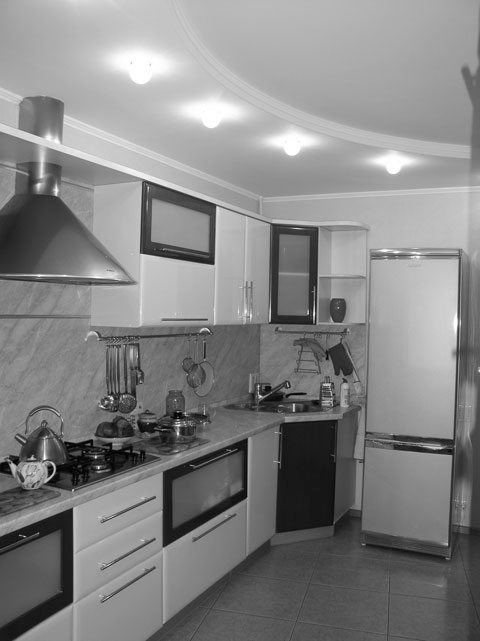
Our kitchen is large and light. It is very well equipped. We have a fridge, a freezer, a microwave oven, a coffeemaker and a toaster.
We haven’t got a dishwasher yet but we are going to buy it. My family and I like our apartment.
Vocabulary
an apartment house - многоквартирный дом
convenient - удобный, подходящий
well planned - хорошо спланированный
lovely - красивый, прекрасный
wall unit- стенка
an electric fire- электрический камин
to change it round - менять местами (мебель)
well equipped- хорошо оборудованный
Answer the questions
-
Where does Misha live?
-
What can you say about his family?
-
Does Misha live in the apartment or in the house?
-
Is his apartment big or small?
-
How many rooms are there in his apartment?
-
How is the living room furnished?
-
Why do they like the living room best of all?
-
Is there a balcony in Misha’s apartment?
-
How many bedrooms in the apartment?
-
What furniture does Misha have in his apartment?
-
What do Misha and his brother do with their bedroom?
-
What do they have in the kitchen?
II. Make up your own sentences using the vocabulary given after each text.
III. Have a look at the speech patterns used in the texts.
Speech patterns
1. to be situated – располагаться, находится
EX: My house is situated 10 miles away from the downtown Minneapolis in a very picturesque place.
Мой дом находится в десяти милях от центра Миннеаполиса в очень живописном месте.
2. there are/there is – есть (находится, располагаться)
EX: There are 3 rooms on the first floor and 4 rooms on the second floor.
На первом этаже расположены три комнаты, на втором- четыре
3. to use something as – использовать что-то в качестве.
EX: We use it as a game room and a gym
Мы используем ее как игровую комнату и спортзал.
IV. Make up your own sentences with each speech patterns.
V. Make a short summary of each text using the vocabulary and speech patterns.
VI. Role play “Tell me something about your house”. Make up dialogues between:
-
Adam and Kelly
-
Adam and Misha
-
Misha and Kelly
VII. Translate from English into Russian
1. I live in a house with the latest modern conveniences. 2. He lives in a four-room apartment with all modern conveniences. 3. I live in a two-storied house. 4. The house is not very large but comfortable. 5. The house is rather nice. 6. There is a shop in the ground story of the house. 7. Our apartment is on the sunny side of the house. 8. We have a house with a view of the sea. 9. We have moved into a new apartment. 10. This room is designed as a study. 11. What a nice and cozy room! 12. Do you have running water in your house? 13. The furniture is very comfortable.
VIII. Translate from Russian into English.
1. Встроенная мебель очень удобная. 2. Мне нравится, как у вас расставлена мебель в комнате. 3. Поставьте диван у стены между окнами. 4. У нас трехкомнатная квартира. 5. Мой дом расположен недалеко от озера. 6. Я сам расставил мебель в моей комнате. 7. Я купил новую кровать в спальню. 8. Мне очень нравится его новый обеденный стол. 9. В комнате три окна. 10. У них дома нет водопровода.
IX. Give full answers to the questions.
-
Do you live in a house or in a block of apartments?
-
Is your apartment well planned? Is it comfortable?
-
Which floor is your apartment on?
-
How many rooms are there in your apartment?
-
Have you got a dining room?
-
Where do you usually have your meals?
-
Is there much furniture in your apartment?
-
What is there in your room?
-
What is your kitchen like?
-
Do you like your apartment?
X. Draw a picture of your apartment or your house, or your dream house and describe it.
XI. Write a composition about your house using the vocabulary and speech patterns and some addition information.
XII. Retell your composition.
GRAMMAR: Настоящее простое время (The Present Simple Tense) Настоящее длительное время (The Present Continuous Tense)
Настоящее простое неопределенное время образуется из первой формы глагола для всех лиц, кроме 3-го лица ед.ч. Для образования 3-го лица ед.ч. к основе глагола прибавляется окончание – s:
Ед.число
1-е лицо I work я работаю
2-е лицо You work ты работаешь
3-е лицо He (she, it) works он (она, оно) работает
Мн.число
1-е лицо We work мы работаем
2-е лицо You work вы работаете
3-е лицо They work они работают
Настоящее простое время употребляется:
1. для выражения общеизвестного факта, являющего неопровержимой истиной:
The Earth is round.
Земля круглая.
The Volga runs into the Caspian Sea.
Волга впадает в Каспийское море.
2. для выражения обычного, регулярно повторяющегося действия, относящегося к настоящему:
My mother teaches English. She is a teacher.
Моя мама преподает английский язык. Она преподаватель.
I write many letters every day.
Каждый день я пишу много писем.
3. для выражения ряда последовательных действий в настоящем.
Every day I get up at 7, get dressed and go to school.
Каждый день я встаю в семь утра, одеваюсь и иду в школу.
4. для выражения действия, совершающегося в данный момент настоящего времени (для глаголов, обозначающих чувства восприятия)
Now I see you very well.
Теперь я тебя отчетливо вижу.
I know what you mean.
Я понимаю, что ты имеешь в виду.
Настоящее простое время, как правило, используется с наречиями неопределенного времени: always, usually, sometimes, often, every day.
Для построения отрицательного и вопросительного предложения используется вспомогательный глагол DO.
Например:
I study in the Astrakhan College.
Do I study in the Astrakhan College?
I don’t study in the Astrakhan College.
Настоящее длительное время обычно передает действие в его развитии, происходящее или в момент разговора, или в данный период времени, рассматриваемый как момент совершения действия:
I am sitting at my table and writing.
Я сижу за столом и пишу.
Настоящее длительное время употребляется:
1.для выражения действия, протекающего в момент речи или в настоящий период времени.
В этом случае настоящее длительное время указывает на то, что действие совершается в настоящий момент, началось до этого момента и будет продолжаться после него. На длительный характер действия указывают обстоятельства времени now, right now, at this moment, today, this week, this month.
It’s raining today.
Сегодня идет дождь.
The children are playing with the ball.
Дети играют в мяч.
2. для выражения будущего действия. На будущее действие указывают наречия tomorrow, soon.
She is coming soon.
Она скоро придет
He is arriving tomorrow.
Он приезжает завтра.
Образование настоящего длительного времени.
Образуется при помощи вспомогательного глагола to be + Participle I.
Например:
I am writing a letter now
You are writing a letter now.
He (she, it) is writing a letter now.
We are writing a letter now.
They are writing a letter now.
Для построения отрицательного и вопросительного предложения используется вспомогательный глагол TO BE.
Например:
Am I writing a letter now?
I am not writing a letter now.
EXERCISES
Ex. 1. Make up ten sentences with the use of the Present Simple and the Present Continuous Tense
Ex. 2. Ask general questions to the sentences. Translate into Russian.
1. He plays tennis twice a week. 2. She learns French and German. 3. We keep our car in the garage. 4. They often make mistakes. 5. I help my mother around the house. 6. They do their shopping every day. 7. We go to the University by metro. 8. The classes begin at 8. 9. I stay at school until 2 o’clock. 10. It often rains in October.
Ex. 3. Put the sentences into the negative form, translate into Russian.
1. Tom gets excellent marks in English. 2. Den studies at the University. 3. They usually buy newspapers in the morning. 4. The teacher asks many questions. 5. He enters the Law Faculty. 6. They go to the country by bus. 7. My friend wants to go to the cinema. 8. Nick works as a doctor. 9. I make coffee for my mother every morning. 10. They like gardening.
Ex. 4. Explain the usage of the Present Simple Tense, translate into Russian.
1. It is warm today. 2. I am glad to meet them. 3. The days are rainy in October. 4. I am 17 years old. 5. We are busy now. 6. My father is at work. 7. You are late today. 8. There is much snow in winter. 9. There are many books in the library. 10. There is one theatre and five cinemas in our town. 11. There are three rooms in our flat. 12. We have many apple trees in our garden. 13. My sister has a nice cat. 14. You have little time left. 15. She has s good rest every summer. 16. They have no vacant rooms in the hotel. 17. Spring is always warm in our region. 18. The water in this lake is salt. 19. I don’t understand what you mean. 20. I know where she lives.
Ex. 5. Ask general questions to the sentences, translate into Russian.
1. The child is sleeping now. 2. Anna is having a lecture now. 3. The family is sitting at the table and having dinner. 4. I’m watching a movie. 5. The girl is reading a book. 6. The students are preparing for exams. 7. It is snowing hard. 8. The little boy is crying. 9. They are laughing. 10. I am waiting for my friend.
Ex. 6. Put the sentences into the negative form, translate into Russian.
1. The bus is going to London. 2. I am cleaning my room. 3. The students are spelling the words. 4. My mother is laying the table. 5. They are having a picnic now. 6. My brother is making a barbeque. 7. He is learning the rules. 8. I am leaving tomorrow. 9. She is opening her presents. 10. I am meeting her at the station.
Ex. 7. Put the verb either in the Present Simple or Present Continuous Tense.
1. Look at the sky; the clouds (move) slowly, the sun (appear) from behind the clouds; it (get) warmer. 2. «What you (do) here?” she asked. “I (wait) for an answer”. “I always (walk) here at this time of the day. 3. He (be) not well yet, but his health (improve). 4. “Alyssa (play) the piano in the next room?” – “No, it (be) Alyssa. I (know) she never (play) the piano so early in the morning”. 5. I (ask) my brother to put all his toys in the box because he (make) too much noise.
Ex. 8. Translate into English, using the Present Simple or Present Continuous Tense.
1. «Что сейчас делает твоя сестра?» «Я не знаю». 2. Я всегда готовлю обед для сестры. 3. Не приходи ко мне завтра, я буду готовиться к докладу. 4. Я не понимаю, почему сейчас светит солнце. Ведь уже вечер, а вечером солнце не светит. 5. Я знаю, что ты имеешь в виду. 6. Я буду встречать его не автовокзале. 7. Я спешу домой, ко мне сегодня зайдет друг. 8. Мама обычно приходит с работы в шесть вечера, но уже половина седьмого, а она не приходит. 9. Ты придешь сегодня на вечеринку? 10. Я всегда прихожу вовремя.
Ex. 9. Open the brackets using the verbs in the Present Continuous or in the Present Simple Tense.
1.I (to read) now. I (to read) every day.
2. He (to sleep) now. He (to sleep) every night.
3. We (to drink) tea now. We (to drink) tea every morning.
4. They (to go) to school now. They (to go) to school every morning.
5.1 (not to sleep) now. I (not to sleep) in the daytime.
6. She (not to drink) coffee now. She (not to drink) coffee after lunch.
7. We (not to watch) TV now. We (not to watch) TV in the morning.
8. They (not to eat) now. They (not to eat) at the lesson.
9. My mother (not to work) now. My mother (not to work) at an office.
10. You (to work) now? You (to work) every day?
11. He (to play) now? He (to play) in the afternoon?
12. They (to eat) now? They (to eat) at school?
13. Your sister (to rest) now? Your sister (to rest) after school?
14. What you (to do) now? What you (to do) every morning?
15. What you (to read) now? What you (to read) after dinner?
16. What they (to eat) now? What they (to eat) at breakfast?
17. What your brother (to drink) now? What your brother (to drink) in the evening?
ADDITIONAL STUDY: House and apartment plans
I. Have a look at the house plan given below and describe it using the following plan:
-
Speak about the house plan in general: the number of rooms, bedrooms, bathrooms;
-
Speak about the architectural design: if the house is well-planed or not;
-
Speak about the furniture in each room;
-
Speak about your likes or dislikes about this house plan.

II. Read and translate the text.
I am Jamie. I live in Annandale, Minnesota. That’s my house plan. As you can see I live there all by myself. That’s why I have only one bedroom.
So, when you enter my house you get right into the living room. There is a sofa and an armchair in it and a TV site in front. Then you may use the stairs and get into the dining zone. There is a table with four chairs in the middle of it. But I don’t have my meals there. Only if I have a company we gather at that able and celebrate.
If you go further you can see a kitchen zone. It’s well-equipped. In the middle of the kitchen zone you can see a bar with stalls – that’s the place where I usually have my meals.
There are two doors in the dining zone. The first one leads into my bedroom. The other one leads into the bathroom. My bedroom is large, but not much furnished. I have a double bed, a night stand and a wardrobe in it.
There are two more doors in my bedroom. The one goes into my wardrobe room, where I keep all my clothes and my other stuff. The other door leads into my bathroom. In my bathroom I have a bath, a sink-site and a toilet. I don’t have a shower because I am not a shower-lover.
What I like the most in my apartment is that I have two large built-in closets in it. I have one in the living room where I keep my coat and shoes. There other one is in the bathroom. There I keep my personal shower belongings, cleaning stuff, laundry powder and other stuff.
I really like my house. That’s the perfect house a young man can dream of.
III. Look at the following houses’ pictures and describe them. Think where these houses are situated and what makes you think so.
A
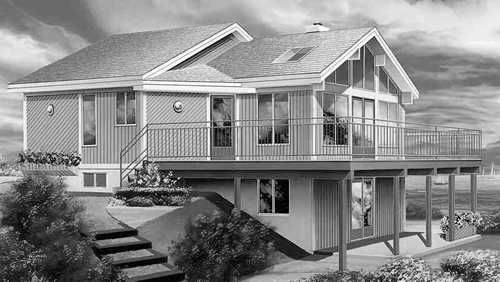
B
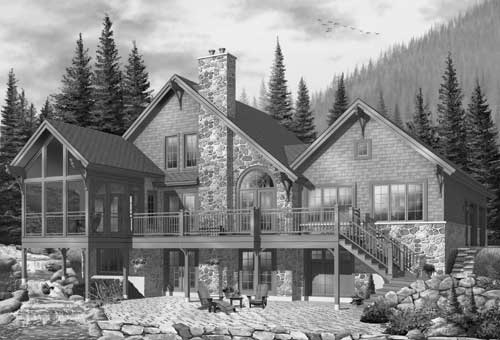
C
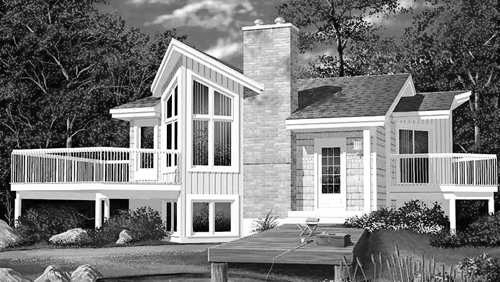
IV. Look at the picture of a mansion and its plan and describe it.
V. Look at the plan of a farm house and describe it
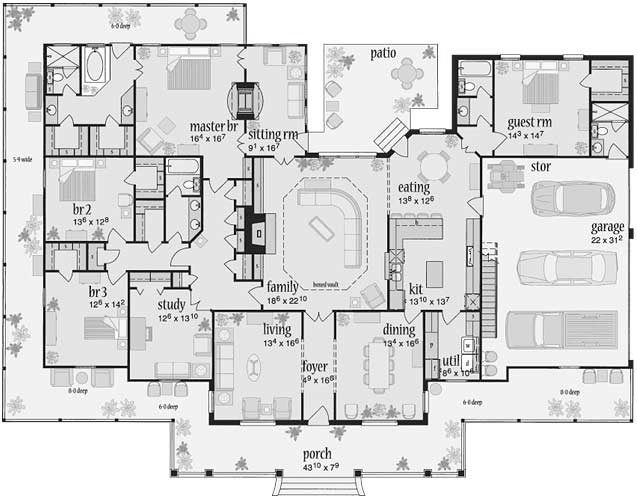
СПИСОК ИСПОЛЬЗУЕМОЙ ЛИТЕРАТУРЫ
-
Агабекян И.П. Английский для средних специальных заведений. Ростов н/Д: «Феникс», 2004 – 320 с.
-
Аракин В.Д. Практический курс английского языка (для 1 курса англ.фак.пед.вузов. – М.: Высшая школа, 1978. – 448 с.
-
Бойко В. 200 тем английского языка. – М.: БАО – ПРЕСС, 2004. - 448 с.
-
Войтенок В.М. Разговорный английский / Учебное пособие – М.: Новина, 1995. – 424 с.
-
Гузеева К.А., Трошко Т.Г. Английский язык / Справочные материалы – М.: Просвещение, 1992. – 483 с.
-
Голицинский Ю. Грамматика английского языка / Сборник упражнений, М.: КАРО, 1997. – 186 с.
-
Грузинская И.А., Черкасская Е.Б. Грамматика английского языка. – М.: ЮНВЕС, 1997. – 256 с.
-
Занина Е.Л. 95 устных тем по английскому языку. – М.: Рольф, 1997. – 320 с.
-
Ионина А.А., Саакян А.С. Английская грамматика: Теория и практика. – 4-е изд., испр. – М.: Айрис-пресс, 2003. – 448 с.
-
Качалова К.Н. Грамматика английского языка. – М.: Внешторгиздат, 1964. - 499 с.
-
Сосис Б.А. 440 тестовых упражнений по английской грамматике. 2-1 год обучения. – М.: Лист Нью, 2004. – 336 с.
-
Токарева Н.Д., Богданова И.М. Курс английского языка для продожающих: Учеб. – М.: Высш. Шк., Дубна: Издат.центр «Феникс», 1996 – 383 с.
-
Трофимов В.Н. Пособие по английскому языку для поступающих в вузы – Минск: Современное слово, 1997. – 144 с.
-
Хведченя Л.В. Английский для поступающих в вузы. – Минск: Вышэйшая школа, 1996. – 358 с.
-
Цветкова И.В. Английский язык для школьников и поступающих в вузы – М.: ГЛОССА, 1996. – 220 с.